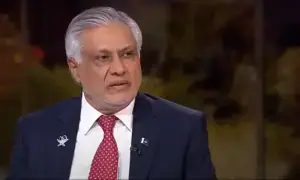Centre wants provinces to share burden in power subsidy to agri sector
Quoting limited fiscal space with the Centre, Ministry of Finance (MoF) has refused to bear any financial implication on the part of Government of Pakistan (GoP) in National Electricity Policy (NEP) 2022, advising Power Division to take provincial governments on board for sharing the burden of subsidy especially for agriculture sector, official sources told Business Recorder.
Finance Division floated this proposal in its comments on draft National Electricity Policy (NEP) 2022, which is in the final stage.
Power Division, sources said, on January 13, 2022 sent the draft NEP to Finance Division for the latter’s viewpoint which is mandatory under the rules of business.
According to sources, Finance Division argued that the policy aims at supply of reliable, secure, efficient and affordable electricity for sustainable growth of economy and is; therefore, supported.
However, the goals and targets set for power sector under the National Power Policy 2013 fall short of targets; therefore, goals and target under the draft policy 2022 may be realistic so the power sector may implement competitive energy market on fast track basis. Resultantly, electricity supply to all areas/categories may be provided under the principle that value of utility has to be in line with protection of lowest category of consumers.
Finance Division further maintained that for fixing of goals and targets under the proposed policy following may also be considered: (i) comprehensive review of the entire production cost components may bring out significant change in the cost of generation, transmission and distribution leading to relief to end-consumers of all categories;(ii) significant improvements in recoveries, Transmission and Distribution (T&D) losses and governance issues at operational level may be made to address the menace of circular debt and subsidy burden on public exchequer;(iii) entire subsidy architecture is required to be built on the principles envisaged in the Prime Minister’s directive dated 12th May 2020, to make them focused, targeted and re-oriented;(iv) with limited fiscal space left with the Centre, Power Division may make focused effort to bring on board provincial governments for sharing subsidy especially for agricultural tube-wells on the pattern of Balochistan; and (v) comments of other stakeholders, particularly Petroleum Division may also be solicited and be incorporated in NE-Plan 2022. However, no financial implications are to be borne on the part of GoP.
The draft NEP says that generation capacity of the country will be expanded only on competitive and least cost basis, except strategic projects.
On May 8, 2020, at a high level at Prime Minister Office (PMO) on budget plan 2020-21, it was decided that subsides need to be reviewed and reoriented, and be targeted and focused. Ministries/ Divisions were to identify such subsidies and present their reorientation plans.
The issue of subsidies also came under discussion with the IMF, World Bank and ADB after which Power Division tailored a three-phased subsidy reform plan for the power sector.
First phase of subsidy reform plan was implemented last year, whereas second phase is almost ready for implementation from February 2022.
According to phase-II, gradual reduction in total net subsidy for unprotected residential consumers, reduction in cross subsidy and removal of previous slab benefit is on the cards. The government, in its submission, has proposed withdrawal of subsidy to the tune of Rs 20 billion from unprotected domestic consumers.
However, the second part of phase-II has been withheld till clear directions from the federal cabinet. Its impact will be up to Rs 0.95 per unit in base tariff of domestic consumers.
The following measures are to be taken in Phase III: (i) reduce number of slabs for residential consumers among protected (subsidized directly by annual budget), unprotected (below cost recovery cross-subsidized by high users), unprotected (full cost recovery) and unprotected (above cost recovery to cross-subsidize low users);(ii) when Disco/ CNIC data are validated-integrate with National Socio-Economic Registry (NSER) and deliver subsidy to the neediest;(iii) adjusting tariffs of industrial, commercial and agricultural slabs to have zero net subsidies; and (iv) de-linking FATA and AJK subsidies from electricity tariffs.
This report was first published in Business Recorder on Feb 1, 2022.
For the latest news, follow us on Twitter @Aaj_Urdu. We are also on Facebook, Instagram and YouTube.















Comments are closed on this story.